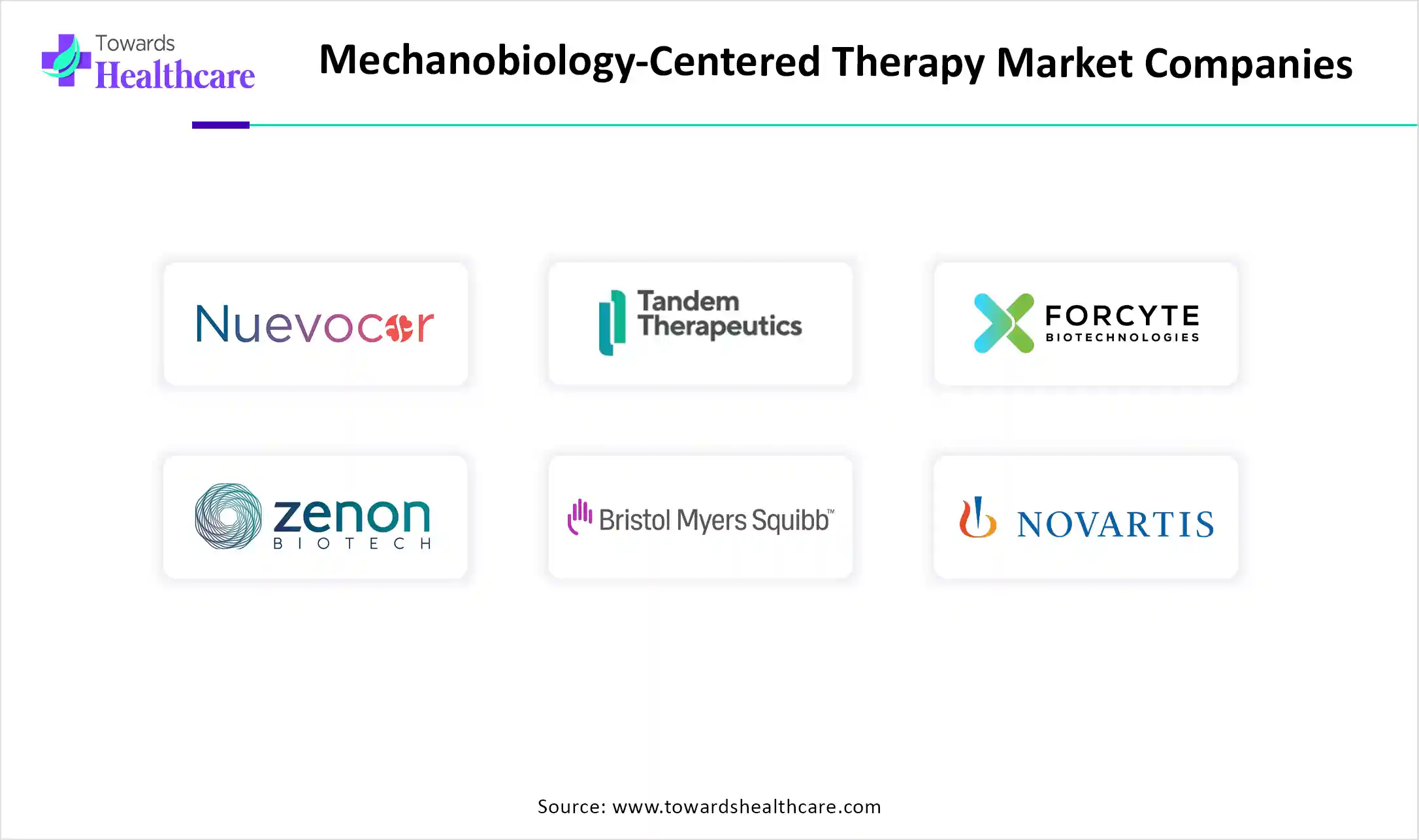November 2025

The global mechanobiology-centered therapy market is emerging as a promising frontier, set to witness significant revenue growth throughout the forecast period from 2024 to 2034. This upward momentum is driven by rapid technological advancements and a growing emphasis on personalized, mechanobiology-driven treatment approaches, which are transforming the therapeutic landscape and aligning with evolving healthcare demands.
A burgeoning discipline called mechanobiology-centered therapy, or mechanotherapy, seeks to create novel treatments by using the impact of mechanical forces on cells and tissues. This method acknowledges that tissues and cells actively interpret and react to pressures rather than merely passively receiving them, influencing a range of biological processes such as illness, cell differentiation, and development. Mechanotherapy is in high demand because it has the potential to transform medicine by providing personalized treatments for a variety of illnesses.
The essential functions of the physical variables that conduct the mechanotransduction process are studied in mechanobiology. At the same time, 3 consecutive processes involved in cellular mechanical phenomena, which are mechanosensing, mechanotransduction, and mechanoresponses, are also studied. Furthermore, the use of mechanotransduction to stimulate tissue remodelling and repair can also be enhanced, increasing its use. These can also be used in drug development and translational medicine research. Moreover, the mechanotherapies help in promoting healing and transforming the damaging mechanical effects into therapeutic benefits. Their use in various diseases is growing, as the abnormal tissues respond to mechanical stress corresponding to the causative factors or symptoms.

The graph represents the estimated number of patients with arthritis that will be observed in Australia in the year of 2030. It indicates that there will be a rise in cases of arthritis, which is a musculoskeletal disorder. Hence, it increases the demand for mechanobiology-centered therapies and treatment options for the effective management of arthritis. Thus, this in turn will ultimately promote the market growth.
AI plays an important role in decoding the mechanics of biological systems, in mechanobiology. At the same time, it also shows successful results in drug design, digital pathology, and protein structure and interactions. Hence, with the help of AI, changes in signals indicating the presence of diseases are easily detected. Furthermore, various models for identifying the responses of tissues, proteins, and subcellular structures of any diseased condition are also being developed. Similarly, to reveal the mechanotransduction impacts on cardiovascular health and disease, new models are also being developed. Thus, the use of AI in mechanobiology-centered therapies is enhancing.
Rising Mechanosensitive Treatment Approaches
Due to growing diseases, the use of mechanosensitive treatment approaches is rising. This, in turn, increases the development of mechanosensitive protein-based drugs or therapies. Hence, it provides targeted action, making them more effective as well as minimizing the side effects. Thus, with the help of mechanosensitive therapies or drugs, the mechanical environment of the patient is controlled, which in turn restores the natural mechanical signals, improving the diseased condition in patients. Thus, this in turn drives the mechanobiology-centered therapy market growth.
Lack of Expertise
The mechanobiology consists of an understanding of signalling networks, which are often complex. At the same time, it becomes difficult for clinicians or researchers to identify or understand these concepts. Thus, the demand for the use of expertise increases. Furthermore, the lack of this expertise causes restraint on the development of the mechanobiology-centered therapies market.
Growing Mechanobiology Research
The use of mechanobiology-centered treatment approaches is driving the interest of researchers in the field of mechanobiology. Thus, these researchers from the industries as well as institutes focus on developing mechanosensitive drugs for improving disease conditions. At the same time, to understand the mechanical forces involved in various diseases as well as to identify them, its use is also increasing. Moreover, growing cancer or cardiovascular diseases are also encouraging the research for mechanobiology-centered therapy approaches, as well as for personalized or targeted treatment approaches. Thus, this promotes the mechanobiology-centered therapy market growth.
For instance,
North America dominated the mechanobiology-centered therapy market in 2024. North America consists of well-developed industries that have developed new mechanobiology-centered therapies for various diseases. This contributed to the market growth.
The industries in the U.S. are well developed, which in turn are focusing on the development of new mechanobiology drugs and therapies. This, in turn, increases the number of collaborations between the industries.
The industries in Canada consist of advanced technologies. Thus, these technologies are being used in the development of new approaches for personalized or targeted treatment of growing diseases.
Asia Pacific is expected to host the fastest-growing mechanobiology-centered therapy market during the forecast period. Asia Pacific is experiencing a rise in the occurrence of diseases, which in turn, increases the demand for mechanobiology treatment options. Thus, this enhances the market growth.
China consists of a large population, which increases the risk of disease burden. Thus, this in turn contributes to the growing demand for the use of mechanobiology therapies. At the same time, with the use of advanced technologies, new approaches are also being discovered.
The rising disease incidences in India in increasing the need for mechanobiology therapies. At the same time, their adoption by various hospitals is also increasing, which is further supported by the government to make them affordable.
Europe is expected to grow significantly in the mechanobiology-centered therapy market during the forecast period. The industries as well as institutions in Europe are contributing to growing mechanobiology therapies due to growing research. This, in turn, promotes the market growth.
The research conducted in the institutes as well as industries in Germany is growing in the field of mechanobiology-centered therapies. At the same time, these developments are increasing the collaborations between the industries and institutions.
UK industries and institutes are focusing on the development of mechanobiology-centered therapies as well as mechanosensitive drugs. Furthermore, new personalized and targeted treatment approaches are also being developed with the use of mechanobiology.

North America
Asia Pacific
Europe
Latin America
Middle East and Africa (MEA)
The emerging need for improved accuracy and detection, as well as technological and screening advancements, ra...
November 2025
October 2025
October 2025
October 2025